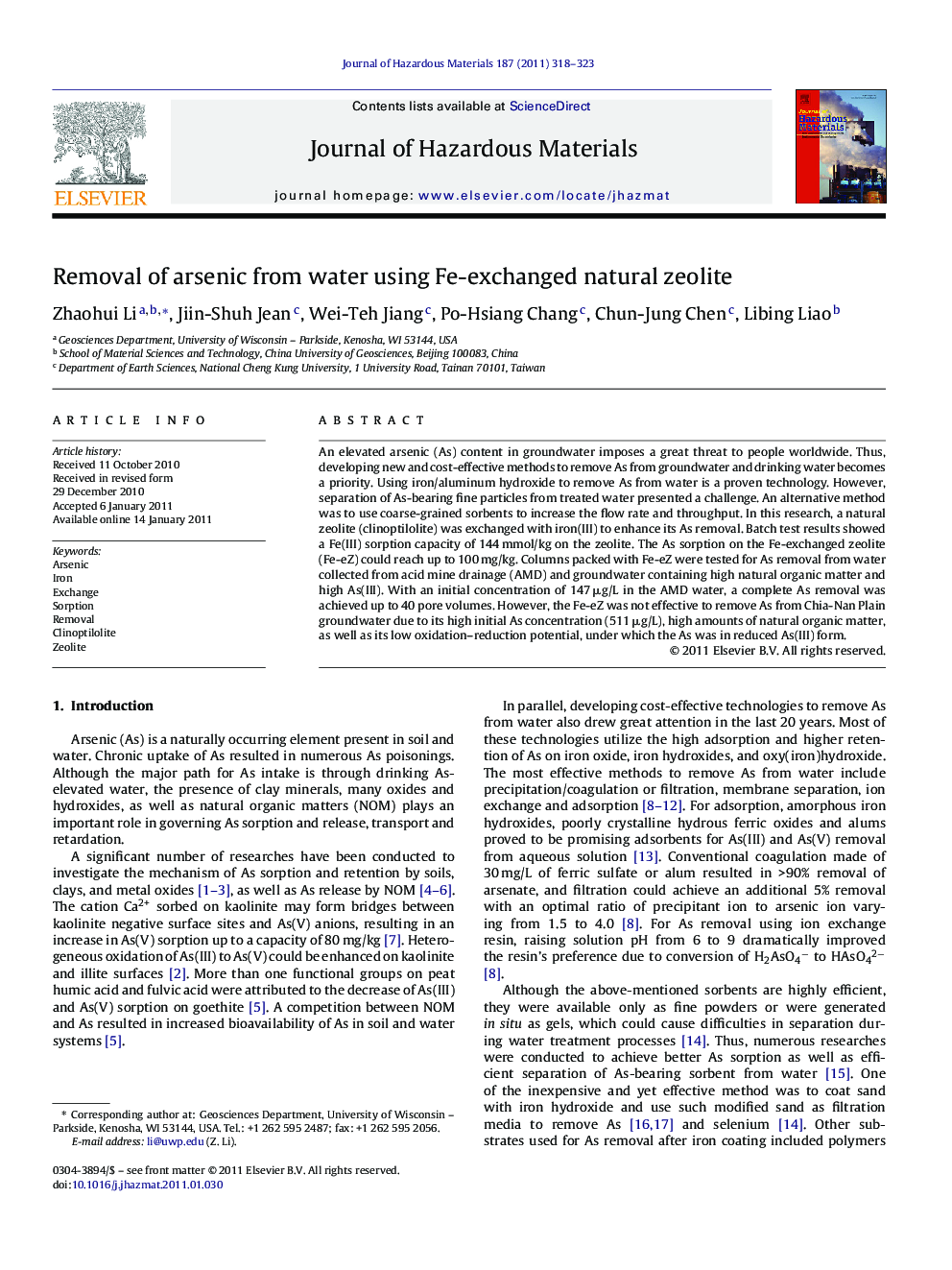| Article ID | Journal | Published Year | Pages | File Type |
|---|---|---|---|---|
| 579454 | Journal of Hazardous Materials | 2011 | 6 Pages |
Abstract
An elevated arsenic (As) content in groundwater imposes a great threat to people worldwide. Thus, developing new and cost-effective methods to remove As from groundwater and drinking water becomes a priority. Using iron/aluminum hydroxide to remove As from water is a proven technology. However, separation of As-bearing fine particles from treated water presented a challenge. An alternative method was to use coarse-grained sorbents to increase the flow rate and throughput. In this research, a natural zeolite (clinoptilolite) was exchanged with iron(III) to enhance its As removal. Batch test results showed a Fe(III) sorption capacity of 144 mmol/kg on the zeolite. The As sorption on the Fe-exchanged zeolite (Fe-eZ) could reach up to 100 mg/kg. Columns packed with Fe-eZ were tested for As removal from water collected from acid mine drainage (AMD) and groundwater containing high natural organic matter and high As(III). With an initial concentration of 147 μg/L in the AMD water, a complete As removal was achieved up to 40 pore volumes. However, the Fe-eZ was not effective to remove As from Chia-Nan Plain groundwater due to its high initial As concentration (511 μg/L), high amounts of natural organic matter, as well as its low oxidation-reduction potential, under which the As was in reduced As(III) form.
Related Topics
Physical Sciences and Engineering
Chemical Engineering
Chemical Health and Safety
Authors
Zhaohui Li, Jiin-Shuh Jean, Wei-Teh Jiang, Po-Hsiang Chang, Chun-Jung Chen, Libing Liao,
